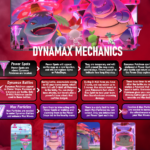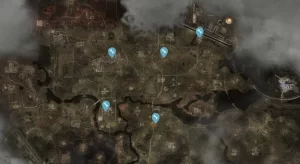Pokémon Go’s Dynamax could be a clever reboot for the seven-year-old game – but currently there’s not enough to it
Earlier this year, Pokémon Go’s senior vice president Ed Wu shared insights on the future direction of this groundbreaking mobile game as it approaches its second decade. One of the most anticipated features has been the introduction of Dynamax, a mechanic that enhances Pokémon to enormous sizes and strengths, originally seen in Pokémon Sword and Shield. While the developers have been somewhat reserved about revealing Dynamax’s implementation, it’s evident that it has been a significant focus in their planning.
However, despite the initial rollout of the Dynamax features, they still feel somewhat underdeveloped and lacking in clarity. There is currently no dedicated Dynamax Pokédex or way to utilize Dynamax Pokémon beyond their specific contexts. This slow introduction may seem like a cautious approach to engaging a casual player base that has established patterns over the years. Without a clear incentive for players to shift their routines and begin collecting Dynamax Pokémon, many, including myself, are engaging with this new feature more out of curiosity than genuine excitement.
Dynamax Pokémon represent a new iteration of the familiar creatures players have been catching for years, requiring them to start fresh in finding Dynamax-eligible versions with optimal stats or rare Shiny forms. Essentially, it serves as a mechanism for Pokémon Go to reintroduce every species already present in the game, similar to how Shadow Pokémon were introduced, but with distinct mechanics that feel somewhat isolated from the rest of the gameplay.
Players can acquire Dynamax Pokémon through Power Spots, newly designated in-game locations that appear as towering pink markers on the map. These spots signal the arrival of something substantial within the game. Engaging with a Power Spot allows players to battle the Dynamax creature and capture it, akin to raid battles but employing different battle mechanics. Players can also choose to leave a captured Dynamax Pokémon to assist others in their battles, earning some rewards in the process.
The collected Dynamax creatures function like regular Pokémon; they can be evolved, powered up, Mega Evolved, and utilized in raids or the Go Battle League. However, their unique Dynamax abilities are confined to Dynamax battles, limiting their utility elsewhere. Players can enhance their Dynamax Pokémon’s stats, moves, and defense through a dedicated section of their stats page, using a new resource called Max Particles (MP) that governs all aspects of Dynamax gameplay.
Players can accumulate a reasonable amount of MP by visiting Power Spots and through daily walking. This resource is spent during Max Battles or when leveling up a Dynamax Pokémon’s attributes. Currently, only Tier 1 Max Battles are available, featuring classic Kanto Pokémon such as Charmander, Bulbasaur, and Squirtle, alongside newer species like Wooloo and Skwovet. These initial battles provide a glimpse into the Max Battle system and are designed to be accessible for all players, making it challenging to assess the level of investment required for more difficult encounters in the future.
Max Battles commence with the player’s first Dynamax Pokémon in its standard form, which then transforms during the fight into its colossal Dynamax version. This transformation is visually impressive, but there may be a need for players to upgrade their Pokémon to survive tougher challenges. For now, Tier 1 battles have a low MP cost, allowing players to engage with several Dynamax Pokémon each day. As players progress, they will encounter more demanding Tier 3 and Tier 5 battles, which will require greater MP investment.
Players can purchase additional MP from the in-game shop, allowing them to surpass the daily engagement limits, though this currently seems unnecessary. While players can pay a high price to double item rewards from Max Battles, it may not be a wise investment for Tier 1 battles. The first Tier-3 Max Battle, featuring Dynamax Beldum, is set to arrive soon, while the scheduling for the first Tier-5 Max Battle remains undecided.
The introduction of Dynamax is reminiscent of how raid battles were initially implemented, with Legendary raids taking time to roll out. Despite this, the Max Battle concept incorporates some commendable improvements. The tiered MP cost for battles is more logical compared to the fixed costs of raids, which require the same resources regardless of battle tier. The flexibility of Max Battles enables players to tackle them at their own pace, making it easier to plan meetups for higher-tier challenges. Additionally, the option to recall Dynamax Pokémon left at Power Spots addresses a frequently requested feature for gyms.
Power Spots, which change locations every few days, encourage players to explore new routes while playing. They do not interfere with existing PokéStops or Gyms, which is a positive aspect. However, the location database for these spots could benefit from improvement, as it relies on outdated business data and lesser-known entries from the developers’ database.
While Dynamax represents a significant addition to Pokémon Go, there remains a need for compelling reasons to engage with this new feature. Players are left wondering if investing time and resources into Dynamax will feel worthwhile. Currently, the rollout does not include any new Pokémon species, which could have been a major attraction. Moreover, there are hints of a possible Gigantamax upgrade on the horizon, though the developers have stated there are no immediate plans to introduce this feature. The hope is for more substantial content to come from Dynamax soon, rather than waiting until the game reaches its next decade to uncover the full potential of this intriguing system.





























Post Comment